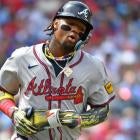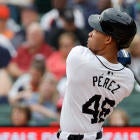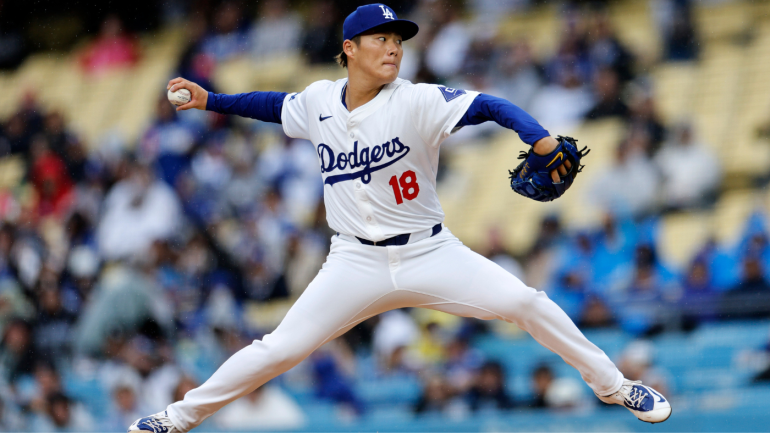
It is tempting to oversimplify things in Fantasy baseball. From our computer chairs and couches, it's so easy to look at a player's BaseballSavant.com page and just say, "Oh, he should just fix this one thing and he'll be fine!"
Just ask Kevin Gausman. For a long time, he was a beguiling and frustrating young pitcher for the Orioles who would look like an ace for stretches when he leaned heavily on his splitter, only to come back out at the beginning of the next season throwing his splitter less than ever before:
It was tough to watch from our computer chairs and couches, because the splitter has always been Gausman's best, and most important pitch, and it was so obvious from the outside that all he needed to do was throw his splitter more. And while that did end up being the key to Gausman's emergence in the past few years as a true ace, that story is a little more complicated than it might look from the outside, because it took Gausman years to figure out how to manage the inevitable, bloody blisters that came from throwing his splitter, especially early in the season. It's a lot easier to just say "throw your splitter more!" when you're not the one dealing with the blood from your computer chair and/or couch.
And sometimes, our too-simple advice for players isn't just too simple; sometimes, it's just wrong. Take the case of Blake Snell and his changeup. In 2021, that was a terrible pitch for him, and minimizing his usage of it while spiking his slider usage seemed to help propel both his second-half breakouts in 2021 and 2022. So, of course, his 2023 breakthrough came when he … deprioritized his slider and threw his changeup and curveball more.
I say this all to say that, "This one simple trick can fix this pitcher!" analysis is often a lot more complicated than it seems. And it's often not particularly actionable for Fantasy anyway, because there's no guarantee that the pitcher and his team will both identify the same issue we have, implement an actual solution for that issue, and then have that solution actually work.
But I think I've found one simple trick that can fix Yoshinobu Yamamoto. Yamamoto's first five MLB starts haven't been awful, but they haven't exactly been what we were hoping for when he signed the largest contract for a pitcher in MLB history. He has a 4.50 ERA through his first 22 MLB innings, with only one quality start in his five trips to the mound.
The thing is, he's mostly come as advertised, though. Both his curveball and splitter rate out as above-average pitches by the Stuff+ model on FanGraphs.com, and he's gotten terrific results with both; a 37.2% whiff rate and .221 expected wOBA with the curveball, and a 42.9% whiff rate with the splitter and .226 xwOBA. His cutter hasn't been quite as impressive, but he's generated decent whiff rates and soft contact when he's thrown it.

Fantasy Baseball Today Newsletter
Your Cheat Code To Fantasy Baseball
You're destined to gain an edge over your friends with advice from the award-winning FBT crew.
Thanks for signing up!
Keep an eye on your inbox.
Sorry!
There was an error processing your subscription.
And then there's the fastball … which has been a real problem. He's got plenty of velocity with the pitch, which comes in at 95.3 mph and can get up to 97, but it hasn't rated out super well by Stuff+, with an 86 mark (100 is average) that sandwiches him between Tyler Anderson and Nestor Cortes in the rankings. Of course, Yamamoto wouldn't be the first pitcher to thrive without an elite fastball, but the thing that is holding him back more than anything else right now is his fastball command, which has been, to be blunt, extremely bad. How bad? Well …
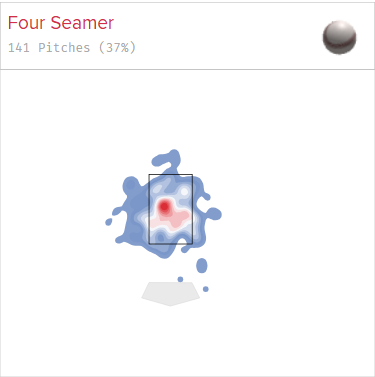
The pitch is getting crushed right now, with two of his three homers allowed coming on the fastball, with a 96.5 mph average exit velocity and .486 xwOBA. And it's not hard to see why – major-league hitters are going to tee off on 95 mph if it's sitting middle-middle.
Seeing as command was supposed to be Yamamoto's strong suit, this seems like a solvable issue for him. That being said, I'm not sure this is necessarily the result of poor command, in that the ball isn't going where Yamamoto wants it to go. I think he's probably aiming for the middle/lower part of the strike zone so it will tunnel with his elite splitter, which he buries below the zone consistently.
Kodai Senga had a similar approach last season, with his four-seamer mostly hitting the zone to set up that deadly ghost fork, and it didn't end up being an impediment to him succeeding:
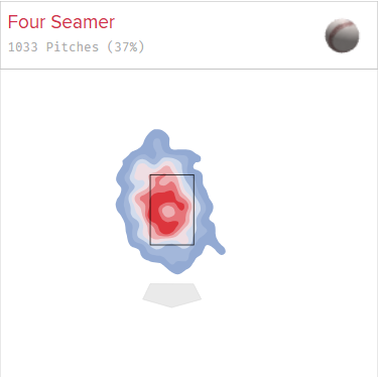
Of course, if you remember, there was definitely an adjustment period for Senga, who had a 4.14 ERA through his first seven starts, with six homers allowed and a ton of walks. Yamamoto didn't have that issue with control, but it's not unreasonable to think he might be struggling similarly with his transition to MLB, which uses a different baseball than the one they use in Japan.
And I'm really not particularly concerned about him failing to live up to expectations at this point. Yamamoto hasn't been underwhelming so far, to be sure, but he also has a 2.57 ERA with 28 strikeouts in his past four starts, so that unseemly overall ERA is mostly a reflection of how bad he was in his first start. And as he continues to get comfortable, I do expect him to pitch more or less like an ace moving forward. His fastball has been a problem, but it's a problem that seems like a problem that should be pretty easy to solve.
Once he does? Watch out, because he really could be a top-five starting pitcher in Fantasy baseball the rest of the way. If there's any buy-low opportunity here, take it.




















